
All categories
Featured selections
Trade Assurance
Buyer Central
Help Center
Get the app
Become a supplier

(44811 products available)







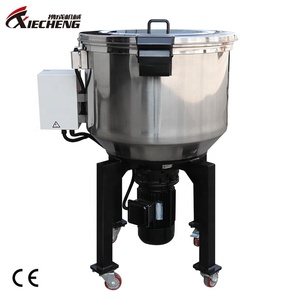









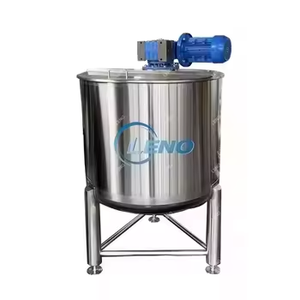
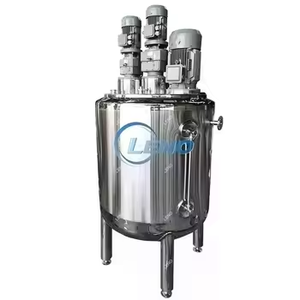





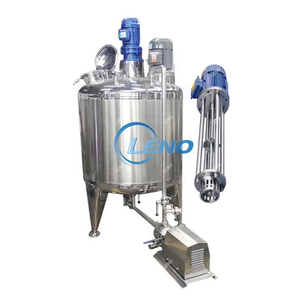





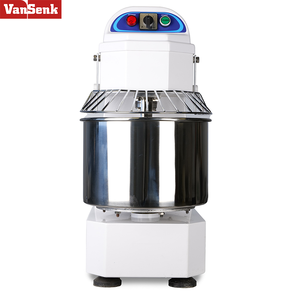














An industrial blender mixer is an essential tool in various industries, including food and beverage, pharmaceuticals, chemicals, and cosmetics. It efficiently blends and mixes large volumes of products. Industrial blender mixers come in different types, each designed to meet specific needs.
Powerful High-Speed Motor:
Industrial blenders typically feature high-capacity motors ranging from 1,000 watts to over 20,000 watts. These powerful motors give the blenders sufficient strength to puree, mix, blend and emulsify even the densest mixtures in a short time.
Large Capacity Blending Containers:
Industrial blenders come with large blending containers that can hold an impressive 50 liters or more. The large containers allow blending of large volumes in a single batch, helping to save time and increase productivity in the industrial kitchen.
Robust Construction:
Industrial blender mixers have heavy-duty, durable construction designed to withstand the heavy-use conditions usually found in industrial kitchens. The blenders feature superior materials such as stainless steel, which is strong, non-toxic, and won't rust or corrode.
Powerful Blade System:
Industrial blender mixers feature robust blade systems with sharp, heavy-duty stainless steel blades. The powerful blade systems are built to last, and they can effectively chop, grind, blend, or puree food to the required texture or size.
Variable Speed & Programmable Controls:
Many industrial mixers are blender models with advanced control systems. The control systems usually have variable speed controls and programmable settings. The control systems provide precise control over the blending operations. Operators can adjust blending speeds and set specific blending programs to optimize results.
Heating and Cooling Function:
Some industrial food blenders have heating and cooling functions to meet various blending needs. The blenders with heating functions can cook or puree hot food. They can also be used to prepare soups, sauces, and other cooked dishes. Additionally, the blenders with cooling functions can be used to make ice creams and other cold desserts.
Safety Features:
Industrial blenders have several safety features that help keep operators safe during blending operations. Safety features like lid locks and emergency stop buttons help prevent accidents and injuries.
The demand for industrial mixers has been rising as several industries depend on the blending, mixing, and grinding of various raw materials for production. Industrial mixers are used to mix, blend, and refine materials in bulk, which is essential to increase productivity and efficiency in various industries. The following are some primary industries that use industrial mixers:
These are just some industries that rely on industrial mixers to produce different products. The mixer can help incorporate air into a mixture to create an emulsion to enhance the texture and quality of the final product.
Selecting the right industrial blender for mixing depends on various aspects, such as the specific needs of the industry, the materials to be mixed, and the operational conditions. Here are some vital factors to consider when choosing an industrial mixer:
Application and Material Characteristics
Various applications require different kinds of mixers. So, determine the application to know the ideal mixer to select. Also, consider the viscosity, density, and particle size of the materials to be mixed. Ensure the mixer chosen can work effectively with the materials.
Mixer Type
The industrial mixer market is filled with several types, each designed to handle specific mixing requirements. As earlier discussed, the ideal type to go for depends greatly on the application. This is because, while some are designed for liquid, solid, or paste mixing, others can handle multiple material mixing.
Mixing Capacity and Scale
The capacity and scale of mixing needed should be well determined before choosing a mixer. These two factors are determined by the production volume and batch sizes. This will help the manufacturer selected run efficiently and meet production needs without under-serving or over-serving.
Energy Efficiency and Power Requirements
Understand the power requirements of a mixer and its energy efficiency. This is important because it helps plan the budget for operational costs and ensures the mixers chosen have the required power to work well.
Materials and Construction
The materials used to construct the mixer can greatly affect its durability and suitability for a particular application. This is because different materials offer different levels of durability. To ensure the chosen mixer is durable and suited to specific application requirements, understand the materials used in the mixer’s construction.
Compliance and Safety Standards
Ensure the blender chosen complies with the regulatory standards of the industry and the necessary safety standards. This is crucial because it helps guarantee the mixer meets operational requirements and prioritizes employee safety while in use.
Maintenance and Support
Understand the maintenance needs of the mixer. This is crucial because it helps ensure smooth operation. Have a plan in place for getting support and spare parts.
Budget and ROI
Budget and return on investment (ROI) should be considered before choosing any mixer. This is important as they help determine the type of mixer to go for and so many other things. Still, more importantly, the budget helps ensure the selected mixer meets production needs without exceeding budget constraints.
Additional Features
Special features like automation, Variable speed control, and monitoring need should be well noted. Such features are often added to help improve mixing flexibility, efficiency, and consistency.
Q1: Can an industrial blender mixer handle hot liquids?
A1: Yes, many industrial blenders are designed to handle hot liquids and can blend soups and sauces directly from the stove. However, checking the manufacturer's specifications to ensure the blender is suitable for hot liquids is important.
Q2: What is the difference between a blender and a mixer?
A2: Mixers and blenders are two different kitchen appliances. Mixers use a rotating mechanism with beaters, whisks, or dough hooks to mix, beat, and knead the dough. Blenders, however, have sharp blades that rotate at high speeds to puree, liquefy, or emulsify food and drinks.
Q3: What is the purpose of an industrial mixer?
A3: Industrial mixers are used in various industries, including chemical, food and beverage, and pharmaceutical, to mix and blend materials. These mixers are designed for heavy-duty use and can handle large volumes of materials. They play a crucial role in ensuring consistent product quality and efficiency in the manufacturing process.
Q4: What cannot be mixed in a mixer?
A4: A mixer should not mix very hard solid foods, as this can damage the blades. It is also not suitable for mixing extremely hot liquids, as this can damage the mixer jar. In addition, mixers should avoid mixing abrasive substances, as this can wear down the blades.